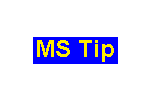- ▶
- Heaters/Source
- ▶
- Agilent Heaters and SensorsMass Spectrometry, Scientific Supplies & ManufacturingScientific Instrument Services 5973 Source Heater Tamper Resistant Allen Wrench 5973/5975 Quad Sensor 5985 Source Heater Assembly Agilent Interface Heater Assembly 5971 Interface Heater

- ▶
- LiteratureApplication Notes Adsorbent Resins Guide Mass Spec Tips SDS Sheets FAQ MS Calibration Compound Spectra Manuals MS Links/Labs/ Organizations MS Online Tools Flyers on Products/Services Scientific Supplies Catalog About Us NextAdvance Bullet Blender® Homogenizer Protocols Micro-Mesh® Literature Instrumentation Literature Agilent GC/MS Literature SIS News / E-Mail Newsletter NIST MS Database - Update Notifications

- ▶
- Mass Spec Tips1 - Freon for use in Mass Spectrometer Leak Checking 2 - Mass Spectrometer Probe Cooling 3 - Sample Vials for Direct Probes 4 - Selection of Vacuum Pump Oils for Lowest Mass Spec Background 5 - Determination Linkages in Biomolecules of Disulfide 6 - Transfer of H.P. ChemStation MS and GC Chromatograms from PC to MAC Computer 7 - Repairing Clogged Thermospray Probes 8 - Tuning a Finnigan 5100 to Meet BFB or DFTPP Criteria 9 - H.P. 5971 Transfer Line Tip for Direct Introduction of Capillary Column 10 - Troubleshooting Finnigan 5100 GC/MS Systems 11 - Leak Checking Mass Spectrometers 12 - Elimination of Memory Peaks and GC Background Noise 13 - SuperIncos Mapped Software Print Buffer Lockup 14 - Reduction of Peak Tailing 15 - Electron Multiplier Sensitivity 16 - INCOS Procedure for Calibrating on the Finnigan 4500 17 - Extending Electron Multiplier Life 18 - What techniques or methods do you use to determine if the electron multiplier 19- What techniques or methods do you use to detect vacuum leaks in your mass spectrometer 20 - Extending Lenear Range of the Mass Spec Article - Improving Sensitivity in the HP 5971 Mass Spectrometer - Part 1 and Part 2

- ▶
- 1 - Freon for use in Mass Spectrometer Leak Checking (This Page)
 Mass Spec Tips is a collection of tips relating to the operation
and service of mass spectrometers. Some of these Tips have been
reported in our newsletter, "The Mass Spec Source."
If you have a question relating to the operation or service of
mass spectrometers or would like to add your comments to the below
tip and would like to have it included in this forum, please contact us.
Input to this database of MS Tips is needed from our readers
to complete this section.
Mass Spec Tips is a collection of tips relating to the operation
and service of mass spectrometers. Some of these Tips have been
reported in our newsletter, "The Mass Spec Source."
If you have a question relating to the operation or service of
mass spectrometers or would like to add your comments to the below
tip and would like to have it included in this forum, please contact us.
Input to this database of MS Tips is needed from our readers
to complete this section.
Author: John J. Manura
Affiliation: Scientific Instrument Services
Many mass spectroscopists have routinely utilized Freon (Dichlorodifluor-methane) for locating mass spectrometer vacuum leaks around flanges, feedthroughs, probe inlet seals, diffusion pumps and other seals on the mass spectrometer vacuum system. The product was convenient to use since it was supplied in a small compressed air can with a nozzle (DustOff by Falcon Products). The gas could easily be sprayed around a suspected leaking fitting while the mass spectrometer was scanned for the predominant ion in the Dichlorodifluoromethane spectra. If a fitting was leaking, the Freon would produce a mass spec ion of 85 M/e in the EI mode. In the last two years, the availability of Dichlorodifluoromethane has been discontinued by all manufacturers in small compressed gas cans due to its ozone depleting properties. As a result other products will need to be utilized for mass spectrometer leak checking.
A similar product, Monochlorodifluo-romethane, sold under the same name of Dust-Off is available from Scientific Instrument Services (part # FGB). This product can be used in the same manner as the previous product, however the mass spectrometer should be scanned for the 51 M/e ion in the spectrum. Monochlorodifluoromethane (M.W. = 86) produces a major peak at 51 (100%) with minor peaks at 67 (15%) and 31 (17%) when the mass spectrometer is scanned in the EI mode. However it is expected that sometime soon this product will also be eliminated because it too is a fluorocarbon and may have ozone depleting properties much like its predecessor Dichlorodifluoromethane.
Perhaps the best product to use for leak checking the flanges on the mass spectrometer is Argon gas. Argon (M.W. = 40) produces a predominant molecular ion at M/e 40 when scanned in the EI mode. Argon can be purchased in larger gas cylinders from your local gas supplier. To this tank you will need a two stage regulator and a length of flexible 1/8Ó tubing for directing the gas flow to the area to be leak checked. This product will not have the harmful environmental effects that the previous fluorocarbons have on the environment.

